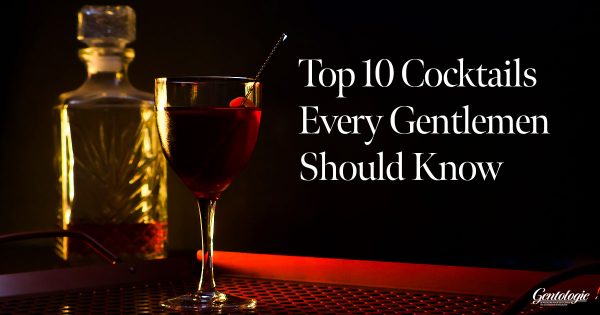Boulevardier Cocktail – Recipe and history
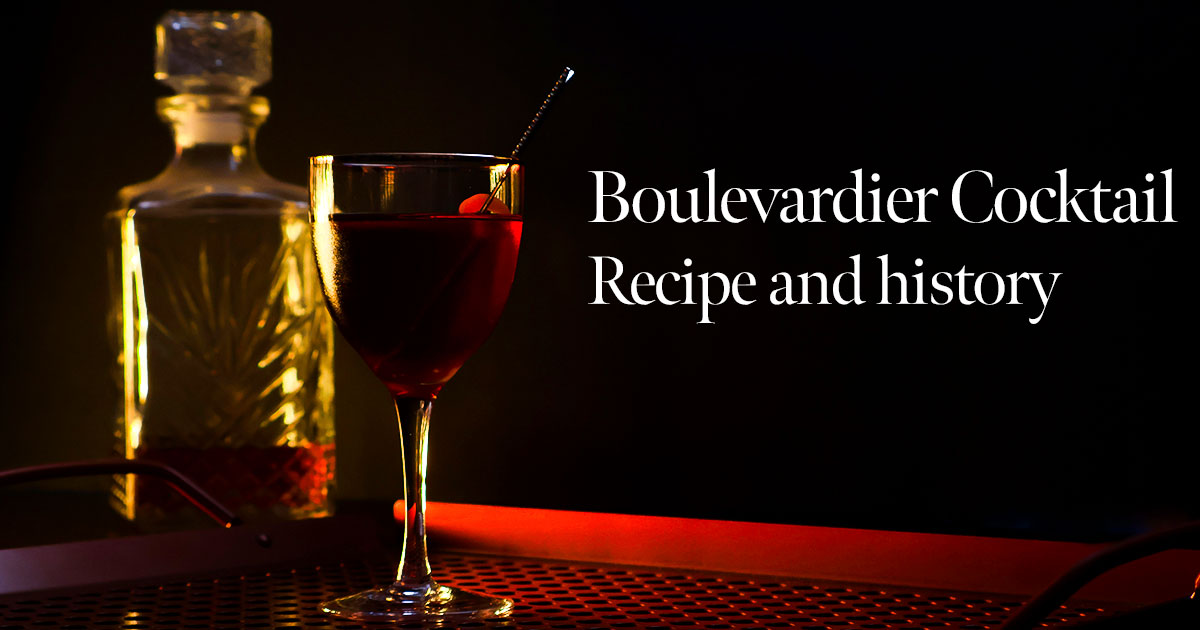
If you’re a fan of the Negroni, you’ll love the Boulevardier cocktail, which bears a striking resemblance to it and, according to Chris Natale, is one of the Top 10 cocktails every gentleman should know. It’s a refreshing cocktail, but, let’s face it, it’s high in alcohol. So let’s trace its rather complex history, which originated in an American bar in Paris created by a jockey and an editor of a magazine related to the Vanderbilts, and discover its recipe, which differs according to several sources.
Table of contents
Boulevardier Cocktail:The Story
The cocktail’s origin is attributed to Harry McElhone, barman at Harry’s New York Bar in Paris (which still exists), but as we explain below, it’s not really his recipe. . .
Harry McElhone, a great mixologist before his time
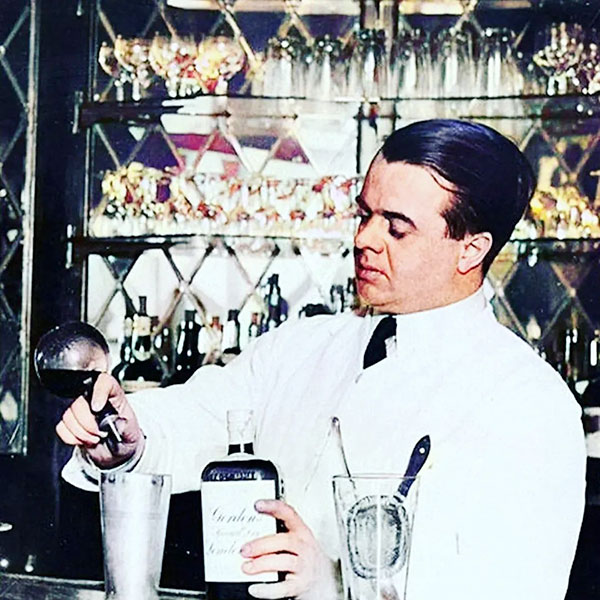
Photo: Harry’s Bar
Born in Dundee, Scotland, in 1890, he began his career in the restaurant trade at a very early age. He worked in several hotels in England before moving to the French Riviera in 1908. He continued his career at the Casino de Nice, then in Cannes. He continued his career and apprenticeships in Vittel, Aix-les-Bains and Enghein. It was on his arrival in Paris that he met James Forman “Tod” Sloan. And that’s what you’ll see in the next few lines.
The New York Bar, before Harry’s Bar

Photo: Harry’s Bar
Before talking about the cocktail, let’s talk about the place (Even Difford’s Guide got the story wrong). Although we know the famous “Harry’s Bar” from the Cipriani family, that’s not the one we’re talking about here. The famous “Harry’s New York Bar” opened on 26 November 1911, American Thanksgiving Day, under the name “New York Bar” and owned by James Forman “Tod” Sloan, a famous jockey of the time. At a time when Prohibition was gaining ground in the United States (nine states had already banned all alcohol consumption), a friend of Tod’s, a man called Clancey, owned a bar on 7th Avenue in Manhattan, New York. Mr. Sloan offered him a partnership, but even more, to dismantle the bar and reassemble it at, you guessed it, 5 rue Daunou in Paris.
It’s worth noting that rue Daunou (Daunou Street), in the Opéra District, is just a stone’s throw from the Ritz and the Café de Paris, two institutions in their day. So there are two “far-west” style doors and a magnificent mahogany bar, already well polished by the hundreds of customers who sat there in its first life. Mahogany panels adorn the walls of the room, and the ceiling is decorated with arabesques in relief, creating a style completely different from those of the establishments of the early 20th century. It was to become the first American bar in Paris (apart from those in hotels). When it opened, Harry McElhone, one of the world’s most renowned barmen, made his debut. But he wouldn’t stay very long.
Harry McElhone’s journey into the art of mixology, and the intricate story of the New York Bar
Mr. McElhone was very popular with the clientele, many of whom were already calling the New York Bar Harry’s Bar, as they wanted to learn more about American cocktails and spirits. So he headed for New York, where he ran the Plaza Bar from the moment he arrived in 1912. His enthusiasm soon took a back seat as the Anti-Saloon League, the country’s puritanical, Protestant and self-righteous movement, campaigned for alcohol prohibition, referring to this degradation imported by Europeans.
In 1913, Mr. Sloan, plagued by gambling debts, sold his bar to another jockey, Milton Henry. With the outbreak of the First World War, Milton Henry and his wife, Nell Henry, sold the bar to British investors and fled to the United States.
Harry returned home to England in 1914 when he enlisted as an officer in the RNAS (Royal Naval Air Service) during the First World War.
With the war over, he continued his prolific career as a barman, opening Buck’s Club and the Flying Club in Hendon. Then it was the turn of the Savoy, but his crowning achievement was his appointment as head bartender at Ciro’s, a popular London establishment. It was there in 1919 that he published Harry of Ciro’s ABC of Mixing Cocktails, which is still updated.
Years later, in the 1920s, Nell, who had become MacGee following her divorce, reappeared in Paris and bought the New York Bar. After a few years of transforming the bar, she began to tire of it and tried to sell it.
Also in the early 1920s, Harry’s bosses asked him to launch a second Ciro’s in Deauville, France. It was not to be for long, as Harry acquired the New York Bar on 8 February 1923.
The New York Bar becomes Harry’s New York Bar
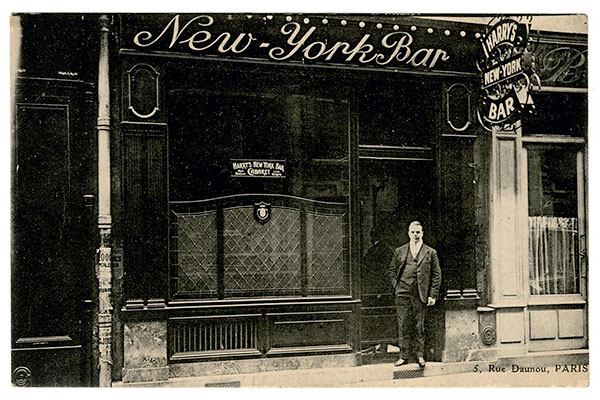
Photo : Harry’s Bar
In 1919, the “New York Bar,” the first French establishment to sell Coca-Cola, became “Harry’s New York Bar” by adding Mr. McElhone’s first name to the existing name. It soon became a legendary venue frequented by expatriate celebrities, and the setting for unforgettable cocktails, including the Bloody Mary, the Blue Lagoon and the White Lady and, of course, the Boulevardier cocktail.
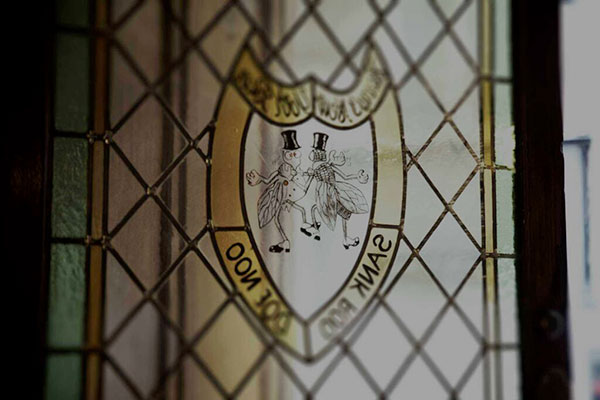
Photo: Harry’s Bar
In keeping with Harry’s Bar motto, “traditionally inventive,” the team perpetuates this know-how and continues to invent cocktails on a regular basis. Some of these cocktails travel all over the world thanks to their very international clientele, and sometimes even return to Paris when fashion dictates. Fancy a visit? Go to Harry’s New York Bar at 5 rue Daunou in Paris. Or as Mr. McElhone would say in his famous ad: Sank Roo Doe Noo.
Since 2022, the team has also imported the “Harry’s Bar” concept to Cannes. Franz-Arthur MacElhone (who seems to have changed his name when Harry McElhone spelt it without the “A”), great-grandson of Harry McElhone, chose Cannes to perpetuate the unique atmosphere of the illustrious bar. It is located at Port Pierre Canto, on the Boulevard de la Croisette.
Boulevardier Cocktail:The origin
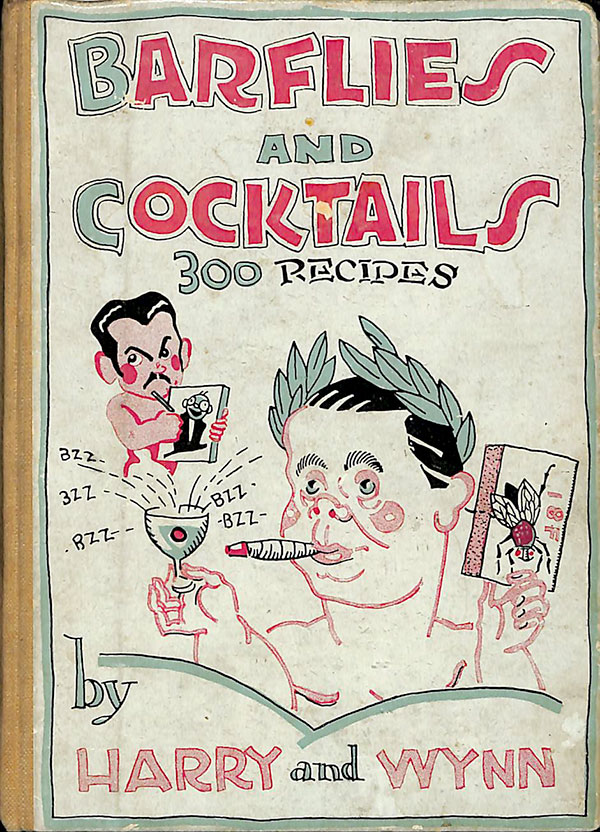
After this long interlude, which explains why American spirits were popular in 1923 at Harry’s Bar New York, let’s return to the Boulevardier cocktail. This cocktail is falsely attributed to Harry McElhone, founder and owner of Harry’s New York Bar in Paris, and dates from 1927. The recipe is only superficially mentioned in his book “Barflies and Cocktails,” not in the 300 or so cocktail recipes that make up the bulk of the book, but rather in an ironic epilogue (“Cocktails Round Town”), which follows, written by Arthur Moss, recounting the antics of the regular customers.
In a brief paragraph, Arthur Moss quotes, “Now is the time for all good Barflies to come to the aid of the party, since Erskinne Gwynne crashed in with his Boulevardier Cocktail; 1/3 Campari, 1/3 Italian vermouth, 1/3 Bourbon whisky.”
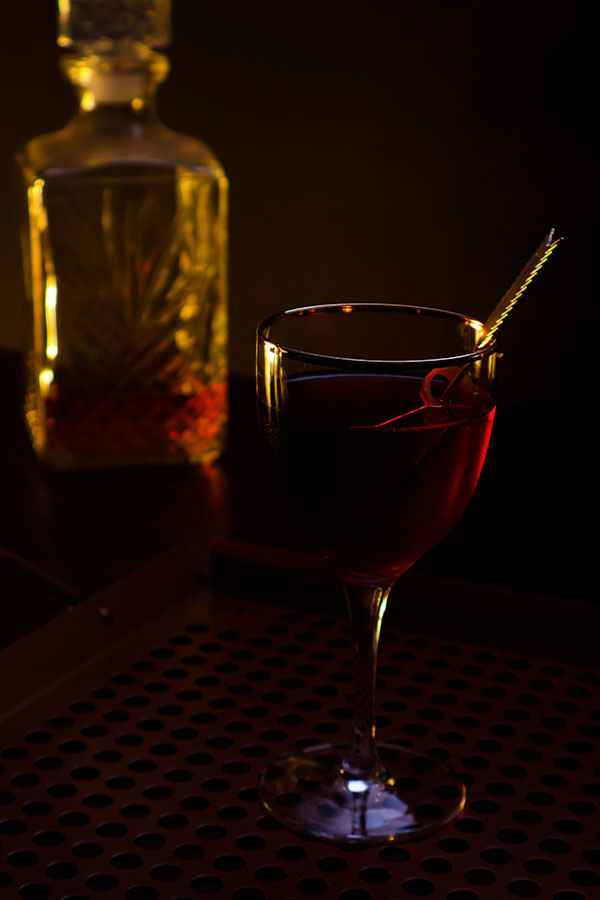
Photo: Normand Boulanger | Gentologie
The name Boulevardier cocktail comes from Gwynne himself, who made his name as the nephew of the tycoon Alfred Vanderbilt by publishing a fashion magazine called Boulevardier, hence the name of the famous cocktail to publicize his publication.
Surprisingly, in some (but not all) editions of McElhone’s book, Harry of Ciro’s ABC of Mixing Cocktails/ABC of Mixing Cocktails, the cocktail is listed with Canadian Club as a whisky (a nice option these days when bourbon is harder to find in Canada) under the name “Old Pal.”
Old Pal’ is also featured in the same column by M. Moss. Moss, “I remember way back in 1878, on the 30th of February to be exact, when the Writer was discussing this subject with my old pal ‘Sparrow’ Robertson and he said to yours truly,” get away with that stuff, my old pal, here’s the drink I invented when I fired the pistol the first time at the old Powderhall foot races and you can’t go wrong if you put a bet down on 1/ 3 Canadian Club, 1/3 Eyetalian Vermouth and 1/ 3 Campari,’’ and then be told the Writer that be would dedicate this cocktail to me and call it, My Old Pal. ’ The Old Pal, again with the same recipe, is credited to William “Sparrow” Robertson, a sports journalist with the New York Herald, Paris.
There are three interesting things about the above: the original recipe featured the ingredients in equal parts, as with the Negroni, McElhone via Moss seems to defer to Gwynne as the drink’s true inventor, and the two cocktails have different vermouths.
As for the name Boulevardier, it obviously comes from the word “boulevard”, which means “street” in French, and has a biting, sharp meaning. It was coined in the Belle Époque to designate someone “who knew the street/city well” in the positive sense of the word.
Basically, the Boulevardier cocktail is seen, from the bartender’s point of view, as an “Americanization” of the Negroni, with bourbon replacing the classic gin, vermouth’s companion, but this is obviously inaccurate, as at the time the Negroni was far from codified and no one could have made a twist out of it. What’s more, it’s served in a goblet, Manhattan-style, and not in an “Old Fashioned” style glass on the rocks, although this incorrect service, according to some, appears on several sites.
Due to the renaissance of classic mixes, it is making a comeback among mixologists and customers thanks to one of the pioneers of the classic cocktail renaissance, who took the time to read “Barflies and Cocktails” carefully, Ted Haigh, better known as “Dr. Cocktail.” He found the reference to Gwynne and her boulevardier in Moss’s section. He devoted a page to the drink in the 2009 edition of his influential book Vintage Spirits and Forgotten Cocktails. And so a more-than-forgotten drink became an emblem worn by cocktail connoisseurs.
Boulevardier Cocktail:The recipe
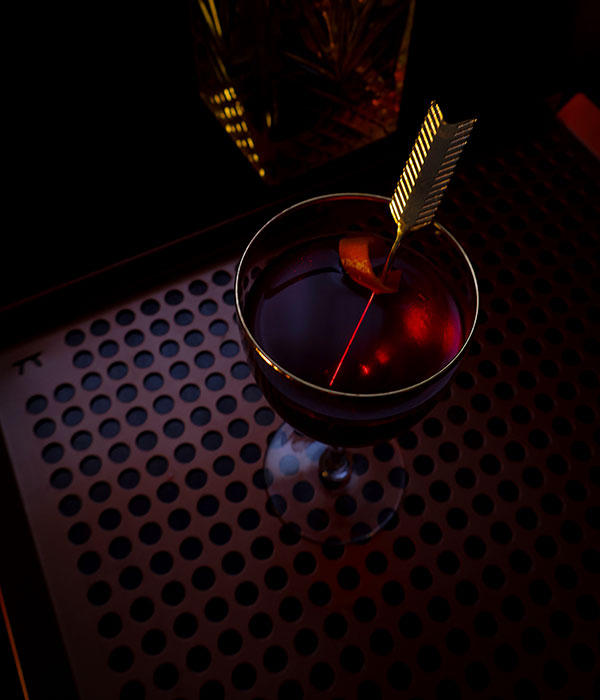
Photo: Normand Boulanger | Gentologie
So, after this long premise, here is the official recipe from the IBA (International Bartenders Association) and the one from Erskinne Gwynne.
Ingredients of the Boulevardier cocktail
Ingredients of the Boulevardier cocktail IBA recipe
- 45 ml / 1 ¼ oz of Bourbon or Rye Whiskey
- 30 ml / 1 oz of Campari
- 30 ml / 1 oz of Sweet red vermouth
- Orange or lemon zest
Ingredients of the Boulevardier cocktail Erskinne Gwynne recipe
- 30 ml / 1 oz of Bourbon
- 30 ml / 1 oz of Campari
- 30 ml / 1 oz of Italian Vermouth (probably sweet and red)
Method
- Pour all the ingredients into a mixing glass with ice cubes.
- Stir well. Strain into a chilled cocktail glass.
- Garnish with orange zest and lemon zest if desired.
There you go, enjoy. And take a look at the Top 10 cocktails every gentlemen should know.
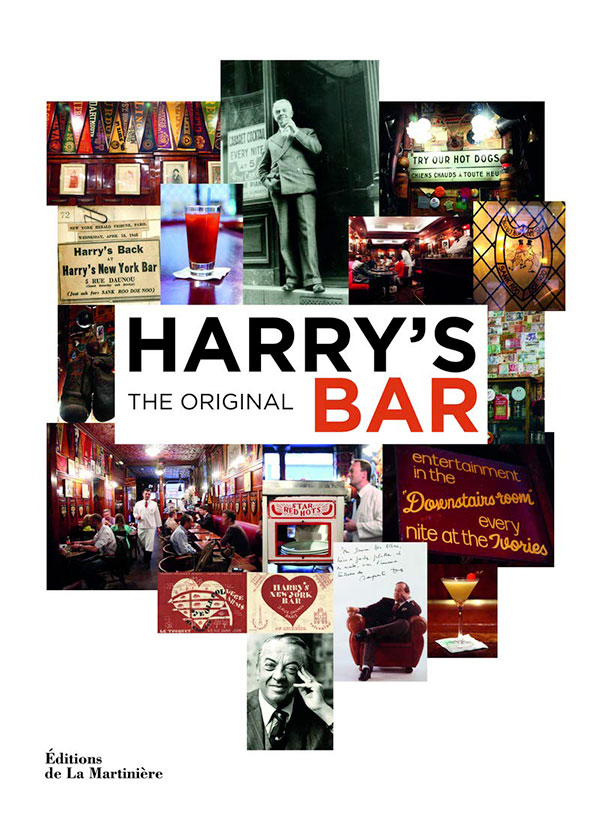
Some of the information in this article was found in the book Harry’s Bar by Isabelle MacElhone, available on Amazon and at Harry’s Bar.


